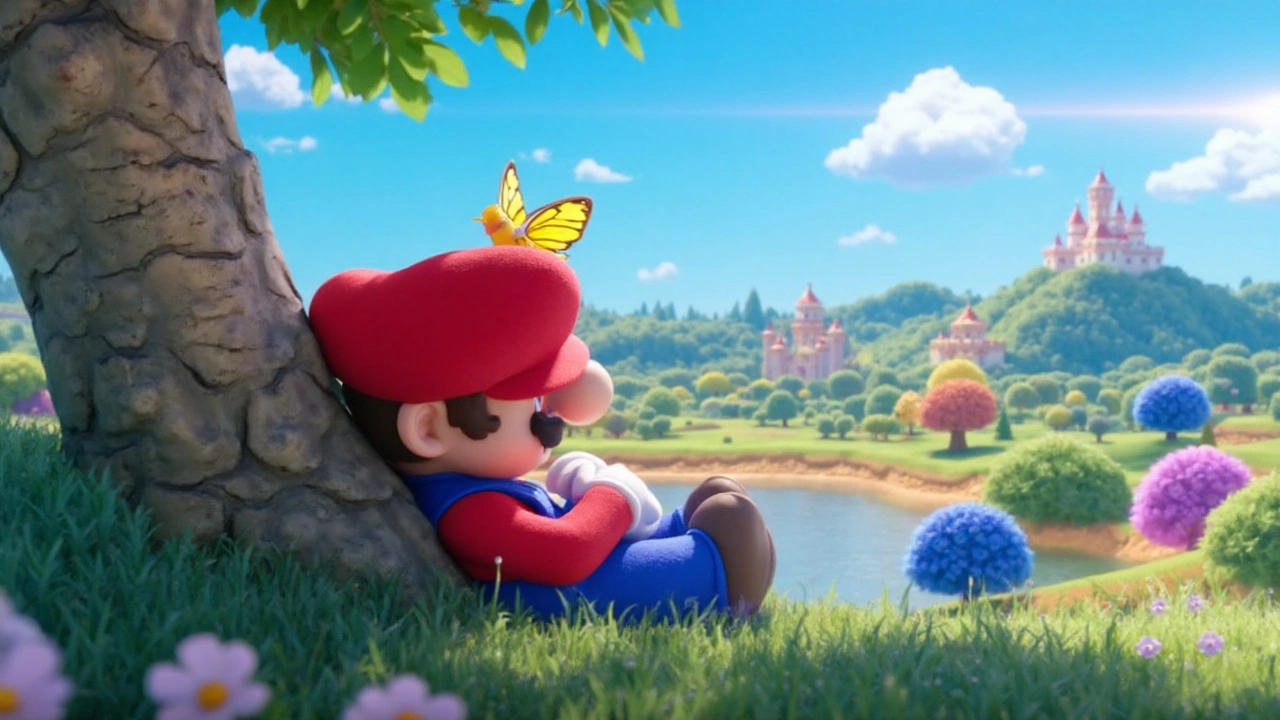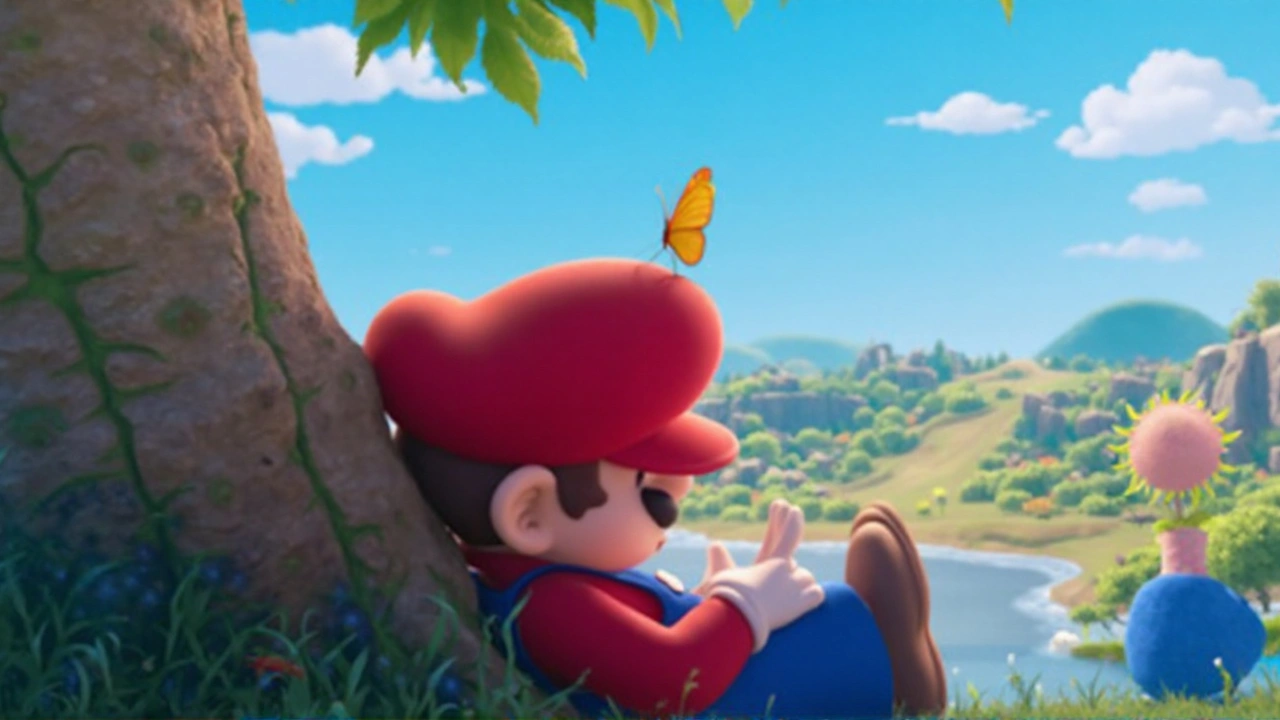Mario’s last big-screen run pulled in $1.36 billion and rewrote the rulebook for game adaptations. Now he’s going to space. Nintendo and Illumination have officially named the sequel The Super Mario Galaxy Movie, confirming what fans have whispered about for months: the next trip through the Mushroom Kingdom won’t stay grounded.
The announcement arrived during Nintendo’s September 12, 2025 Direct, ending the rumor cycle with real dates and a clear signal of intent. The movie opens worldwide on April 3, 2026, with Japan getting it on April 24. That timing lands almost three years to the day after the 2023 smash hit—enough runway for a bigger story and a denser production, without losing the momentum the first film built.
Universal Pictures will distribute globally, and the financing is a Universal–Nintendo split, just like last time. Strategically, early April is a sweet spot for family releases—close to spring holidays, far enough from the summer crush, and proven turf for animated tentpoles. The first film’s April slot helped it dominate the conversation for weeks. Expect the studio to try to repeat that cadence with a similar marketing playbook: early teases, a character-driven main trailer, and a long tail of clips and TV spots closer to launch.
The first movie set a high bar. It became the biggest video game adaptation ever and the second-highest-grossing movie of 2023 behind Barbie. It also eased a long-standing fear in Hollywood that game-based films cannot win both critics and audiences. This sequel doesn’t just inherit that goodwill—it has to expand it.
Release date, cast, and creative team
Most of the core team is back. Aaron Horvath and Michael Jelenic return to direct. Matthew Fogel is writing again, and Brian Tyler is composing the score. On the Nintendo and Illumination side, Shigeru Miyamoto and Chris Meledandri continue as producers, maintaining the partnership that kept the first film tightly aligned with the games. That continuity matters. The last movie resonated because it looked and felt like Mario, not a loose adaptation that only borrowed names.
The voice cast is once again anchored by Chris Pratt as Mario, Anya Taylor-Joy as Princess Peach, Charlie Day as Luigi, Jack Black as Bowser, Keegan-Michael Key as Toad, and Kevin Michael Richardson as Kamek. It’s a lineup audiences already know, a big advantage when you need to sell a sequel fast. Jack Black’s Bowser became a pop-culture moment in 2023 (yes, the song helped), Taylor-Joy’s Peach was proactive rather than passive, and Pratt and Day found a brotherly rhythm that played well with families.
Illumination and Nintendo say more characters will be revealed later. That’s where the space angle gets interesting. The first film’s post-credits stinger teased Yoshi without fully introducing him. The Galaxy games, meanwhile, brought in Rosalina and the Lumas—fan favorites with a lot of story potential. None of that is confirmed for the movie, but the title leaves the door wide open. Expect casting news to trickle out in waves to keep the sequel in the news cycle.
Here’s the quick snapshot of what’s locked in so far:
- Title: The Super Mario Galaxy Movie
- Announced: September 12, 2025 (Nintendo Direct)
- Release: April 3, 2026 worldwide; April 24, 2026 in Japan
- Directors: Aaron Horvath, Michael Jelenic
- Screenwriter: Matthew Fogel
- Composer: Brian Tyler
- Producers: Chris Meledandri (Illumination), Shigeru Miyamoto (Nintendo)
- Distributor: Universal Pictures
- Returning voice cast: Chris Pratt, Anya Taylor-Joy, Charlie Day, Jack Black, Keegan-Michael Key, Kevin Michael Richardson
This sequel was flagged early. On March 10, 2024—Mario Day—Nintendo said a new Mario movie was in the works, after company president Shuntaro Furukawa had floated the idea back in 2021 of doing more films if the first performed. It did more than perform. That’s why the second film feels less like a gamble and more like the next step in a bigger plan.
The business case is straightforward. Co-financing keeps risk in check, while a second global rollout runs on lanes Universal knows well. Add in merchandise, console campaigns, and theme-park synergy with Super Nintendo World, and the reach goes far beyond the theater. Family franchises live on repeat viewing and recognition. Mario delivers both.

What the Galaxy setting could bring to the story
Super Mario Galaxy (the 2007 Wii game) is remembered for its gravity-bending levels, tiny planetoids, and an orchestral score that gave the series a more cinematic feel. It set Mario loose in space without losing his charm. That’s the energy the film can tap into. Planets the size of playgrounds. Jumps that wrap around spheres. A chase scene that flips the camera as gravity shifts. There’s a lot to turn into set pieces that feel new, even if you’ve watched decades of Mario.
Producer Chris Meledandri has said the movie will appeal to fans of all Mario games, not just Galaxy. That matters for tone. The first film balanced callbacks with a simple, accessible story. This sequel has to do the same, but on a cosmic stage. Expect familiar beats—Mario and Luigi’s bond, Peach leading with brains and nerve—framed by bigger stakes and visual tricks that only space can offer.
Rosalina and the Lumas are the obvious question marks. In the games, the Comet Observatory acts as a hub, the Lumas are both cute and crucial, and Rosalina’s story adds a surprising layer of warmth. None of that is confirmed for the film, but if those elements do appear, they’re ready-made for cinema: new character dynamics, a ship that doubles as a base, and high-emotion moments that can ground the spectacle.
Galaxy also introduced transformations that lent themselves to humor and momentum—Bee Mario, Boo Mario, Spring Mario. The first movie mined power-ups for visual gags and quick reversals. Space suits and gravity quirks could push that even further. Picture a Toad mission where the team must navigate a planetoid’s shifting pull, or a Bowser scheme that literally cracks a mini-planet in half.
The music is a swing factor. Brian Tyler returns, and the Galaxy games built their identity on sweeping orchestration. Fans will listen for familiar themes—Gusty Garden Galaxy is the one that always gets mentioned—woven into fresh cues for a film that has to move faster than a platformer. If Tyler fuses those motifs with the first movie’s melodic palette, the score could become a headline achievement, not just a backdrop.
Visually, Illumination’s pipeline can lean into starfields, particle effects, and materials that react to rotating light sources. The first movie was crisp and colorful. This one has a chance to be even richer, with cosmic dust, glowing star fragments, and the stark contrasts you get when tiny worlds spin past a sun. Space can be intimidating, but it can also be bright, playful, and oddly cozy—exactly the tone Mario needs.
Character arcs will matter as much as spectacle. Peach isn’t likely to step backward after her debut as a capable leader. Luigi found his footing late in the first movie; giving him room to be brave in a hostile environment would pay that off. Bowser, last seen trapped and seething, is a wild card. Space gives villains a lot of room to escalate. If he’s loose again, expect him to go bigger.
Nintendo’s broader strategy sits in the background. After years of keeping its worlds largely on consoles, the company has stepped into theme parks and film with care. The first movie showed how to keep the tone and the details intact—everything from power-up physics to the way characters move. That approach helped it win over longtime players without losing newcomers. It’s hard to argue with that formula.
The release window also tells a story. Early April has become a quiet power slot for family blockbusters. It’s far enough from the winter awards corridor to avoid serious drama fare, and ahead of the May–July crush that can kneecap anything not named after a superhero or a toy line. If Galaxy repeats the first film’s performance, it could own several weeks and carry strong legs through spring.
The marketing rhythm is easier to guess than the plot. Expect a title reveal (done), a logo pass, and a short teaser that sells the space angle without blowing key surprises. A longer trailer would likely arrive closer to the holidays or a major Nintendo beat—think big Direct events or Mario Day—followed by character spotlights, song teases, and a final push with new footage in the last month.
What don’t we know yet? Plenty:
- Plot specifics, including how and why the story leaves the Mushroom Kingdom
- Which new characters appear (Rosalina, Lumas, and Yoshi are the obvious candidates, but unconfirmed)
- New voice cast additions and who plays any marquee newcomers
- Runtime, rating, and the structure of the third act (space-set finales can be tricky)
- How much the film reuses themes from the Galaxy games versus debuting new musical anchors
There’s also the matter of tone. The first film was bright, zippy, and safe for kids. Galaxy can keep that spirit and still sharpen the stakes, because space has built-in tension and wonder. The trick will be letting moments breathe without stalling the energy. Animation can do quiet just as well as action; the Galaxy games proved that with storybook interludes that fans still talk about years later.
From a craft angle, zero-gravity scenes open up comedy that live-action struggles to stage cleanly. Imagine Mario drifting toward a star shard while Toad ricochets off a planetoid, or Luigi trying to brave a dark mini-galaxy where every misstep flips him upside down. That physical humor plays right into Illumination’s strengths, and it photographs beautifully in animation.
The sequel also gives Nintendo room to nudge its universe forward. Cameos and crossovers are easy to overdo, but they’re catnip when handled sparingly. The first film teased Yoshi and sprinkled in references fans could find on repeat viewings. Expect the same restraint, because it was part of why the movie worked—it felt like a story first, not a checklist.
On the business side, Universal’s global machine and Illumination’s track record with event animation give this project a comfortable runway. Theaters want reliable four-quadrant hits. Families want something that works for a six-year-old and still lands for a thirty-six-year-old who knows every Mario sound effect by heart. Galaxy is built for that split audience.
And if you’re wondering how Nintendo plans to keep the brand humming between now and spring 2026, watch for smart timing: game promotions around tentpole dates, fresh looks during high-traffic Nintendo presentations, and a steady drip of casting reveals. The first campaign understood that kids latch onto characters while older fans cling to details. You can speak to both without shouting at either.
So where does that leave us? With a locked title, a firm release date, the core team and cast in place, and a space setting with real cinematic promise. The question now shifts from “if” to “how.” How weird will the gravity tricks get? How much heart will they pull from the Galaxy mythos? And how will Mario and Luigi handle a rescue mission when the ground itself won’t stay put?
Answers are coming. For now, the big picture is clear: Mario’s next leap is off-world, and the people who nailed his return to theaters are steering the ship again.
